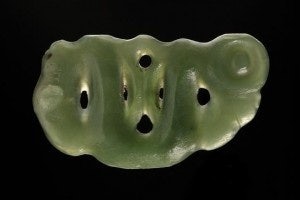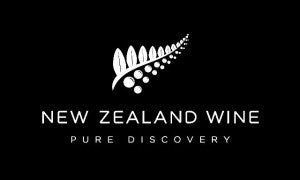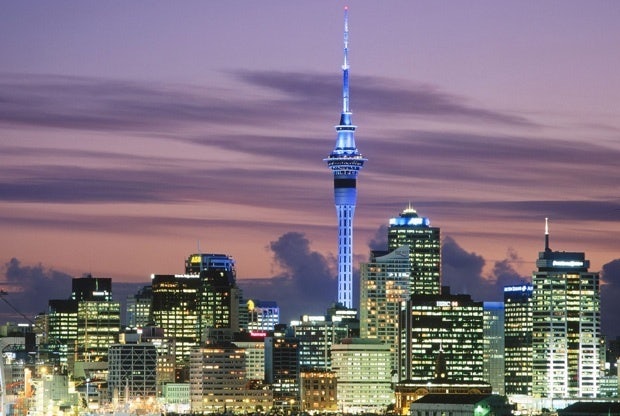11 Of New Zealand’s Top 20 Export Markets Are In Asia#

Growing ties between New Zealand and China are giving new optimism to everyone from jade and wine producers to organic farmers, universities, tour operators and real estate brokers. Like nearby Australia, which exported $44 million worth of dairy cows to China in 2011 and 4,060 tons of beef in September alone, food safety concerns among China's wealthier consumers have been among the most important factors leading to increased demand for New Zealand products -- buoying Kiwi lamb farmers and dairies in particular -- but changing lifestyles are also helping producers of more specialized items.
Jade#
Though it sounds counterintuitive that China would be curious about New Zealand jade, it's hoped that one recent exhibition of the country's indigenous strain could raise interest. Whether that ultimately leads to an opportunity to sell New Zealand jade in China is an open question, but The Museum of New Zealand Te Papa Tongarewa's exhibition in Beijing could be a first step. From the Wall Street Journal:
“Kura Pounamu: Treasured Stone of Aotearoa New Zealand” opens at Beijing’s National Museum of China on Wednesday, part of a celebration of four decades of diplomatic relations between the two nations. Next year it travels to the Liangzhu Museum in Hangzhou, Guangdong Museum in southern China, Three Gorges Museum in Chongqing, and Shaanxi Museum in Xi’an.
The exhibit features 200 pieces carved from Pounamu, a type of jade found on New Zealand’s South Island, and sheds light on the stone’s cultural significance in Maori culture. While greenstone’s history is shorter than jade’s, “there is quite a lot of similarity around practical uses of the materials,” Mr. Houlihan said, “whether it’s for weapons, tools or adornments.”
Wine#

Though they have a long way to go to catch up with Australia -- which is one of the top three wine import markets in China -- Kiwi producers have increased exports rapidly in recent years to cater to an increasingly diverse emerging wine industry. Currently, the combined markets of Hong Kong and mainland China are New Zealand’s fifth-largest wine export market, according to Rabobank, with one analyst calling Greater China New Zealand's "most lucrative major [wine] market by some margin." Over the past year, New Zealand wine exports to China rose 50 percent as wineries looked to leverage the five-year-old New Zealand China Free Trade Agreement. Yet currently, New Zealand accounts for a miniscule portion of imported wine market share in the country, representing less than 2 percent of the market.
However, as wine-drinking trends in China shift, New Zealand winemakers think they'll be well-placed to capitalize in the years ahead. Though Chinese wine drinkers remain, on the whole, fixated on big, bold red wines in general and French reds specifically, more interest among women and younger drinkers is helping mid-range New World producers and white wine-focused vintners. Though white wine accounts for a relatively small proportion of the overall imported wine market in Greater China, the IWSR (International Wine & Spirit Research) reported this June that Sauvignon Blanc is the most popular white grape among Chinese consumers, and now makes up a "significant proportion" of New Zealand wine exports to China.
Coffee#

As Stuff.co.nz noted this June, the increasing number of Chinese coffee drinkers is also proving irresistible for some New Zealand-based chains, with Kiwi-roasted brand Esquires— which has opened eight locations in since 2009 — saying they hope to open 250 stores throughout the country by 2019. Esquires recorded first quarter sales of 5 million yuan (US$786,870) in China, with projections of hitting US$3.2 million in 2012, over $2.4 million in 2011.
As Ellen Zhang of Esquires Coffee put it, despite massive (as she sees it) potential in the Chinese market despite, intense competition in an already crowded market means it’s no easy sell. ”It’s not like here in New Zealand where people drink coffee every day…In China they’re very quiet in the morning. They prefer the afternoon in the coffee shop.” Yet as Zhang pointed out, consumption patterns of the emerging middle class are reshaping the market completely: ”In China we’ve got about 300 million middle class and they all love coffee and wine – imagine that.”
Tourism#

Last month, Chinese tourists surpassed Americans to become New Zealand's third-largest source of overseas visitors, and have visited the country in rising numbers over the past several years -- often attracted by New Zealand's natural beauty and proximity to Australia (another major tourism destination). This year, Chinese arrivals in New Zealand are up nearly 40 percent year-over-year, with Auckland Airport recording a 74.2 percent increase in Chinese tourist arrivals in September. In the 12 months up to September 30, New Zealand recorded a total of 133,336 visitors from China, a 46 percent increase over one year earlier.
However, according to Simon Wallace, Policy and Research Manager at the Tourism Industry Association, New Zealand has a long way to go to compete with Australia in attracting more high-end tourists. From the WSJ:
Chinese tourists often fly into New Zealand's largest city Auckland before traveling to the central North Island city of Rotorua famous for its gysers and mudpools and then heading to Waitomo to look at a series of well-known caves before flying out. More needs to be done to encourage them to stay longer, Mr. Wallace said.
